Sustainability
Haddon Rig is lucky to be endowed with a wealth of natural assets, including many native animal and plant species, extensive wetlands, waterways and native pastures. We are also home to a wide range of birdlife, which make their homes on our swamps, creeks and rivers.
We are committed to the protection and promotion of our natural capital assets and to reducing the environmental footprint of our operations.Whilst recognising this is an evolving space and that we are at the beginning of our journey, some of the projects we have completed are:
PROTECTION OF NATIVE BIRDLIFE
Every year, Haddon Rig partners with Charles Sturt University to support their Wetlands Birds Fund. This project aims to use acoustic monitoring technology to detect wetland bird species in south-eastern Australia and Tasmania, and monitor their diversity and breeding events through the timing and frequency of the noises they make.
The objectives of this project include:
- to better understand the ecology, population status and distribution of wetland bird species in eastern Australia;
- trial large-scale deployment of acoustic sensors with manual data collection;
- determine the presence or absence of bird species
- an increase in the public’s awareness of these species
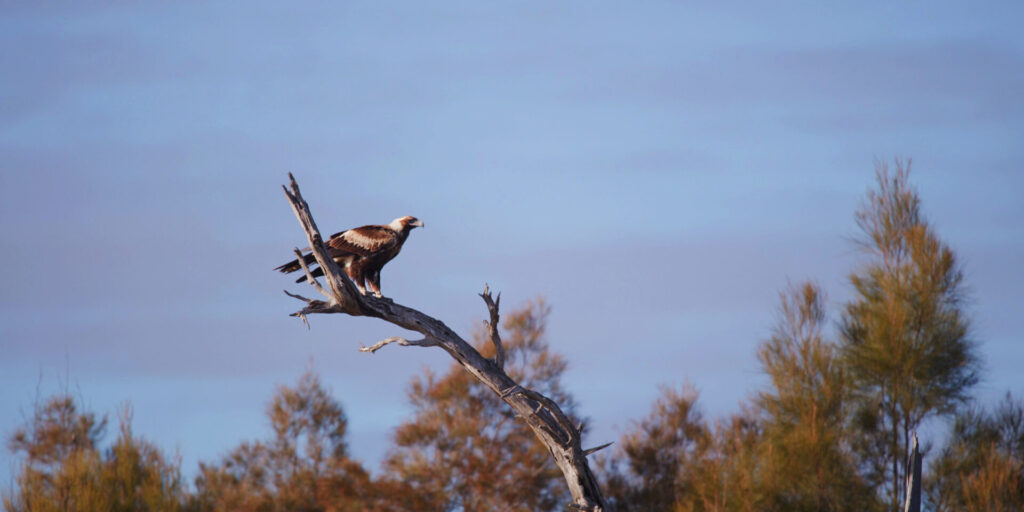

PROTECTION OF NATIVE FISH SPECIES
We have the long-term future of the merino industry in our sights. Our genetic measurement and subsequent combinations enable us to identify and choose animals with desirable traits including superior fertility, meat production, wool quality and a resilience to extreme Australian weather conditions.
The Falkiner family and team’s commitment to genetic progress over the last 100 years has led to greater consistency and accuracy in the progeny they sell.
100 KILOWHATT SOLAR
In 2023, we took part in the NSW DPI Energy Efficiency Solutions project, which involved installing a 100-kilowatt solar PV and 150-kilowatt-hour lithium-ion battery system, providing the farm with approximately 70% energy independence from the electricity grid.
The main supply points for the new system are the office, main accommodation block, maintenance shed, woolshed and sheep feedlot.
- Annual electricity bills were reduced by about two-thirds.
- The sheep feedlot is operated by a fully automated, computerised feed out system that is now 100% reliable, and this reliability has been provided by the new energy system.
- The shearing shed equipment requires electricity to operate, and the new system avoids previous issues such as shearers not being able to work due to blackouts.
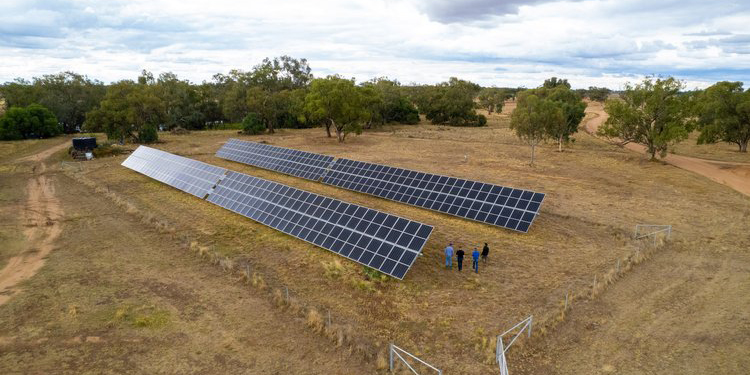
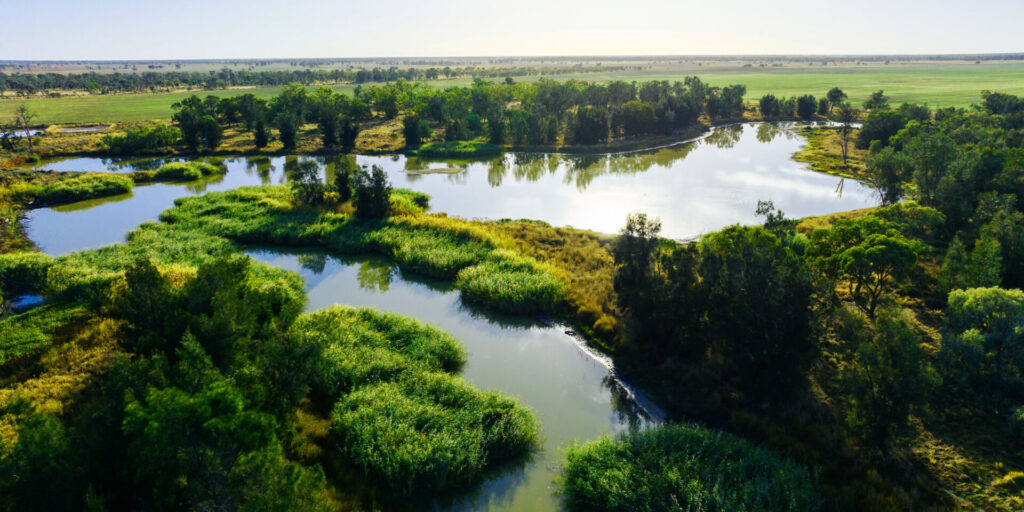
REVEGETATION AND TREE PLANTING PROGRAMS
Over the last five years, Haddon Rig has planted over 2000 trees, and created over 10 km of biodiversity lanes. These tree lanes serve as windbreaks, habitats for birds and wildlife and help protect our crops and livestock from spray drift. The original 5km of tree lanes were planted with the help of the Warren Youth Group, a community organisation aimed at helping disadvantaged and indigenous youth find employment and upskill.
SHEEP BREEDING FOR SUSTAINABILITY
Haddon Rig is dedicated to breeding adaptable Merino sheep that reduce environmental impact and promote sustainable farming practices. Our program prioritises high-quality, fertile, and true-to-type meat-producing Merinos, employing scientific techniques to meet modern social, climatic, and environmental demands.
As consumers increasingly seek sustainable and ethical production, we focus on enhancing the quality of our Merinos and their wool. Our selection criteria include traits like structure, fertility, recovery, and resilience to drought and high rainfall, ensuring sustainability in the face of climate variability.
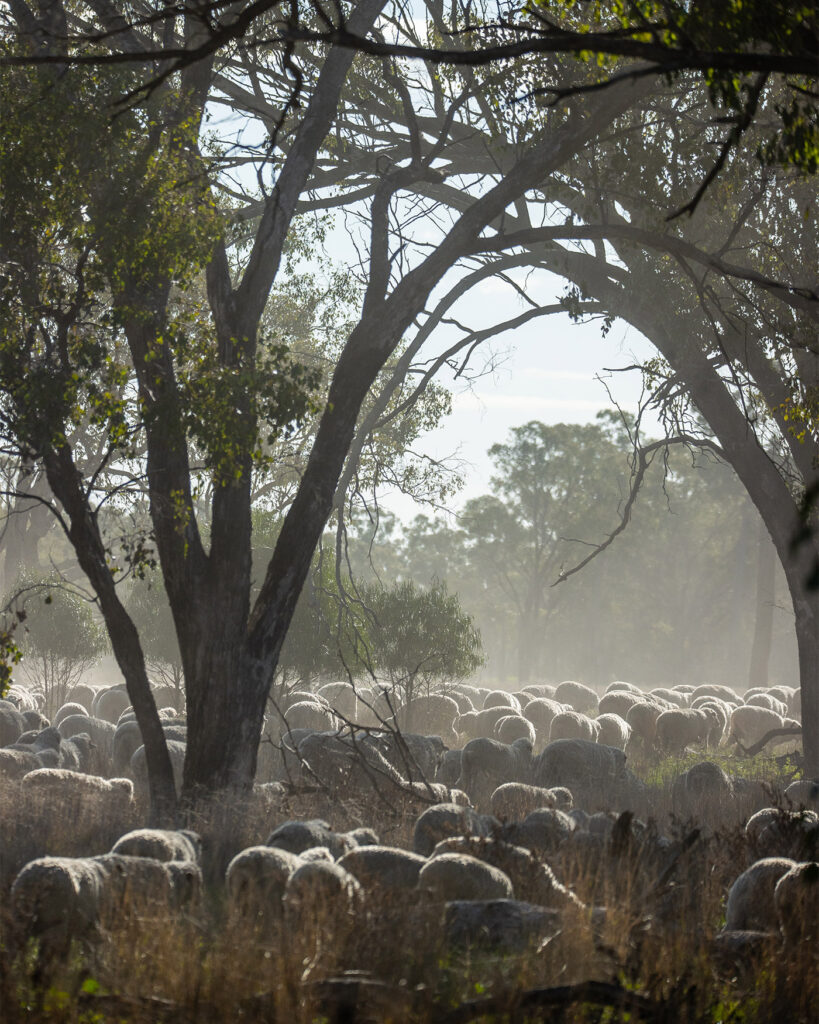
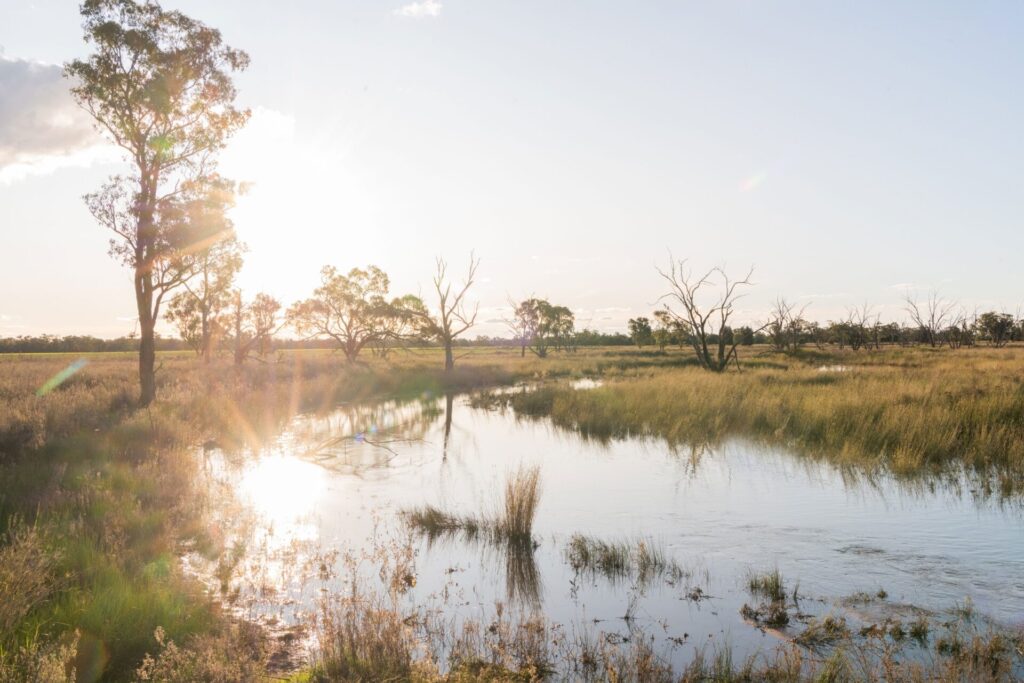
Country Road and Landcare
The Biodiversity Project
Since 2020, Country Road has proudly partnered with Landcare Australia to support the restoration of Australian farmlands, with a focus on increasing biodiversity in cotton-growing regions.
The partnership is designed to enrich Australia’s biodiversity by assisting local cotton farmers to restore Australian farmlands with long-term aims of protecting soil health, providing habitat for native species and improving water quality across river systems.
Haddon Rig and Country Road partnered together in 2024 with a riparian zone restoration project commencing in early-2025 to protect a marshland, native grasses and tree species to promote biodiversity and native species growth.
To learn more, head to the Country Road website:
https://www.countryroad.com.au/our-impact-partnerships-landcare-australia/

